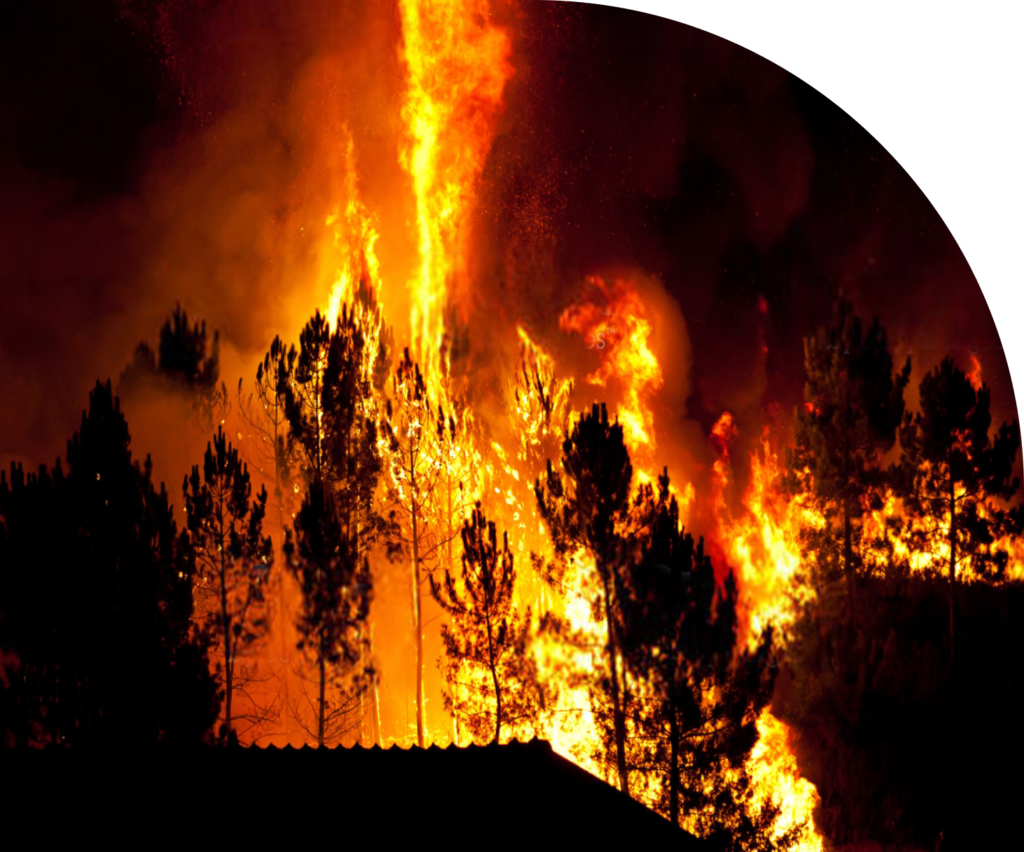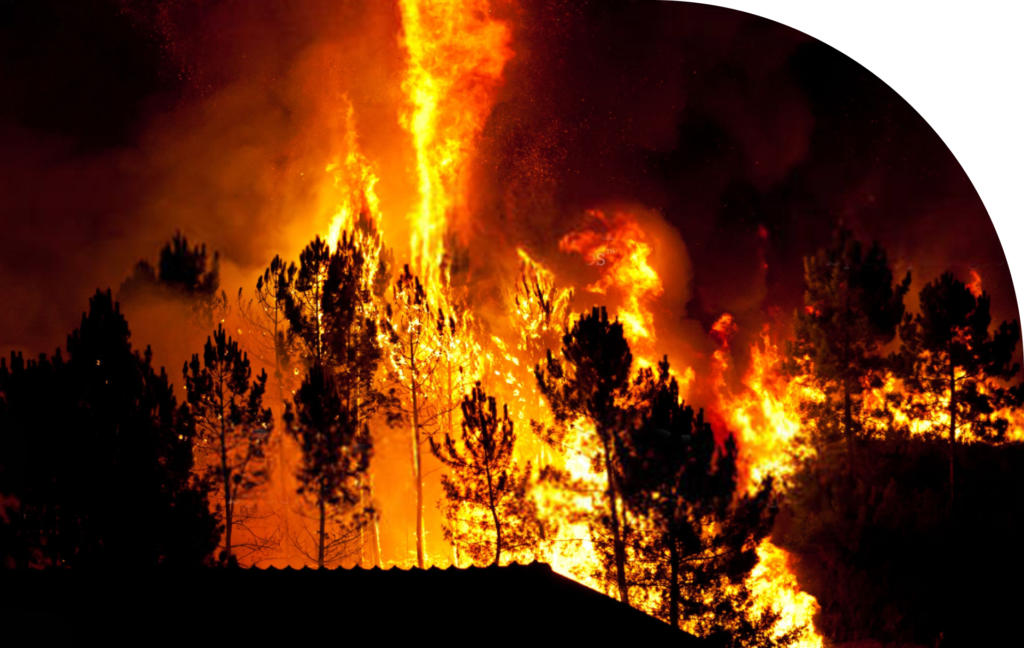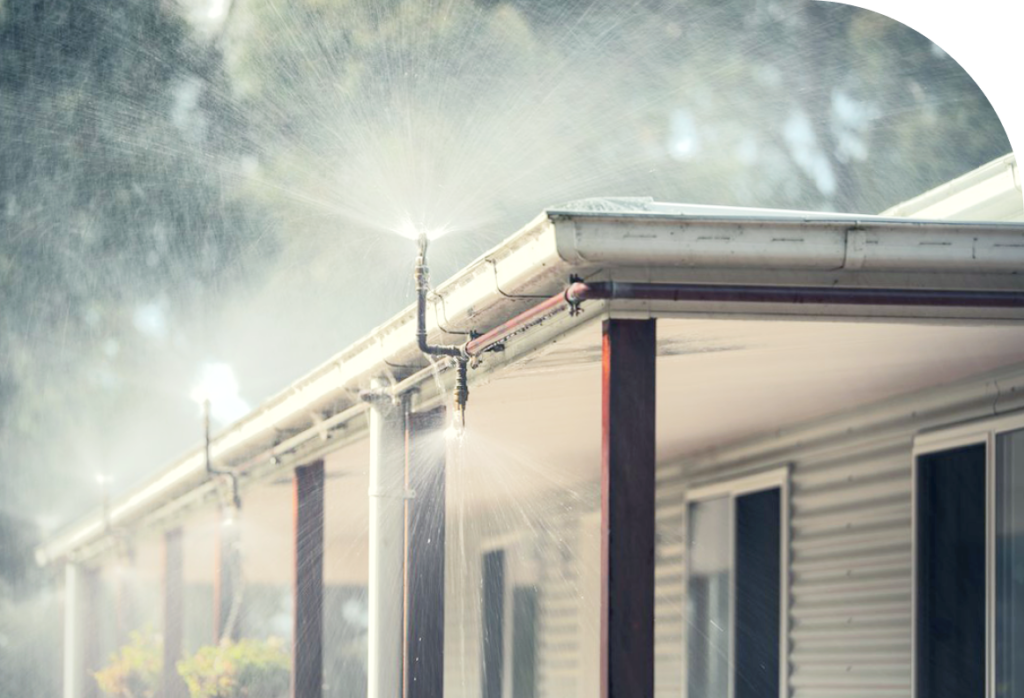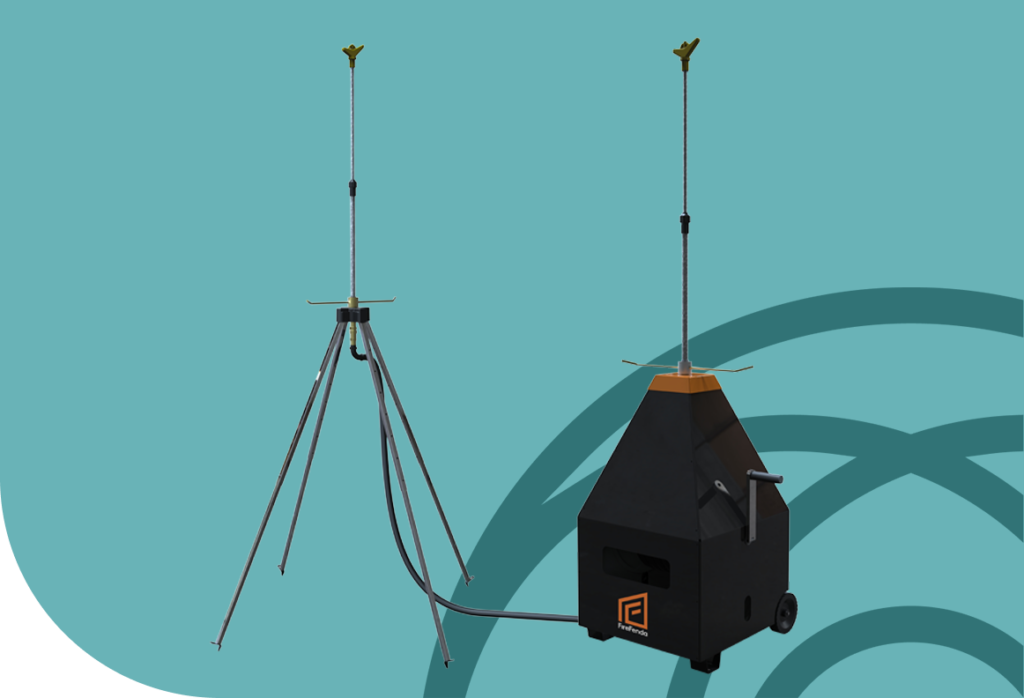Bushfire Protection

The dangers of being unprepared
It is essential that anyone who lives or owns property in a bushfire prone area is prepared for the event of a bushfire.
As of March 2020, bushfires that year had burnt an estimated 18.6 million hectares and destroyed over 5,900 buildings in Australia alone.
With record breaking temperatures and droughts exacerbated by climate change, the threat and intensity of bushfires in Australia is rapidly increasing. A combination of less rainfall, dry vegetation and drought is lengthening the season of danger and reducing the number of days available for fuel reduction. This makes it significantly harder to prepare for these worsening conditions, but also exposes the importance of having adequate bushfire protection for homes and livelihoods.
The benefits of bushfire sprinkler systems:
Sprinkler systems are recognised by fire services across the country as an extremely valuable resource in defending homes against ember attack and radiant heat exposure (up to 19 kW/m2), providing there is sufficient water available. With water availability a deciding factor as to whether a house survives, reliable, robust sprinklers and a well-maintained plumbing system is crucial. An effective sprinkler system must have a delivery system that discharges water at appropriate densities and be made of non-combustible materials.

The dangers of being unprepared
It is essential that anyone who lives or owns property near bush, grassland, dense forest or the coast is prepared for the event of bushfire.
As of March 2020, bushfires that year had burnt an estimated 18.6 million hectares and destroyed over 5,900 buildings in Australia alone.
With record breaking temperatures and droughts exacerbated by climate change, the threat and intensity of bushfires in Australia is rapidly increasing. A combination of less rainfall, dry vegetation and drought is lengthening the season of danger and reducing the number of days available for fuel reduction. This makes it significantly harder to prepare for these worsening conditions, but also exposes the importance of having adequate bushfire protection for homes and livelihoods.
The benefits of bushfire sprinkler systems:
Sprinkler systems are recognised by fire services across the country as an extremely valuable resource in defending homes against ember attack and radiant heat exposure (up to 19 kW/m2), providing there is sufficient water available. With water availability a deciding factor as to whether a house survives, reliable, robust sprinklers and a well-maintained plumbing system is crucial. An effective sprinkler system must have a delivery system that discharges water at appropriate densities and be made of non-combustible materials.
Bushfire protection systems
Bushfire protection systems fit into two broad categories—fixed systems that are designed and custom fitted around a house or building, and portable systems that can be relocated and deployed to the site that needs protection.
Your property’s vulnerabilities to bushfire:
- Radiant heat exposure or direct flame contact from nearby fuel resulting in building ignition
- Broken windows from flying debris, door gaps and under floor spaces for ember entry
- Roof cavities on ridgelines, gutters, roof valleys and vents at risk of ember entry
- Ember contact with timber floor, windows and doorframes causing ignition
- Flammable household items such as outside furniture, pot plants, garden beds, household accessories and firewood
- The location of the building in relation to the property and surrounding bushland


Bushfire protection systems
Bushfire protection systems fit into two broad categories—fixed systems that are designed and custom fitted around a house or building, and portable systems that can be relocated and deployed to the site that needs protection.
Your property’s vulnerabilities to bushfire:
- Radiant heat exposure or direct flame contact from nearby fuel resulting in building ignition
- Broken windows from flying debris, door gaps and under floor spaces for ember entry
- Roof cavities on ridgelines, gutters, roof valleys and vents at risk of ember entry
- Ember contact with timber floor, windows and doorframes causing ignition
- Flammable household items such as outside furniture, pot plants, garden beds, household accessories and firewood
- The location of the building in relation to the property and surrounding bushland



Contact the WestVic Plumbing team and protect your home today.
0447 188 300
plumbing@westvicplumbing.com.au

Contact the WestVic Plumbing team and protect your home today.
